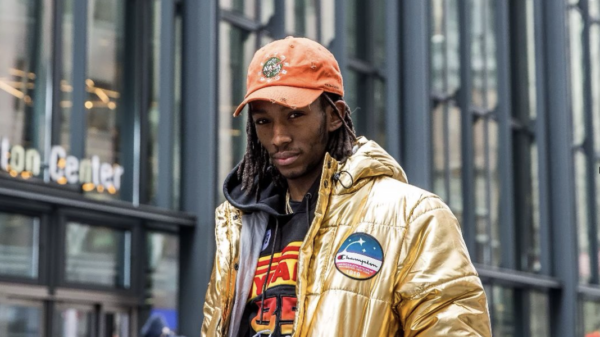At the start of James Mangold’s A Complete Unknown, a young, determined-looking Bob Dylan (played by Timothée Chalamet) arrives in the Greenwich Village of 1961. He’s immediately thrust into an urban jumble of coffeehouses, bars, zigzagging streets, and tiny city apartments, even if New Jersey locales stood in for the Village.
If any of it looks or feels cinematically familiar, it should, since the worlds of movies and TV have been making return visits to that neighborhood and era for over a decade. You could start with Inside Llewyn Davis, the Coen Brothers’ bleak but penetrating 2013 film about a character loosely based on Dave Van Ronk, the force-of-nature custodian of Village music and integrity who died in 2002. (Van Ronk, played by Michael Chernus, pops up in two brief scenes in A Complete Unknown but is never identified as such.) Even more so than the Seventies comedy Next Stop, Greenwich Village, Llewyn captured the congested but exhilarating downtown New York world that Chalamet’s Dylan explores as America entered a new decade and folk music was the soft-spoken rage.
Elsewhere, Rachel Brosnahan’s Midge Maisel, the lead character of The Marvelous Mrs. Maisel, honed her chops as a standup comic in a recreation of the Gaslight Café, the basement Village coffeehouse with the overhead pipes that also provided a real-life home to Dylan, Beat poets and writers, the future Wavy Gravy, and many to come. This year, Sarah Seltzer’s beguiling novel The Singer Sisters, which tells the story of a particularly tangled musical family over the course of decades, was partly set in those same clubs and streets during the same period.
In a way, it’s about time. Other music scenes around the country have been resurrected and romanticized — most notably the one centered around Laurel Canyon in L.A. That community, which begat everything from the Mamas and the Papas and the Byrds/CSNY gaggle to Carole King, Joni Mitchell, and the Jackson Browne/Eagles nexus, has been the subject of multiple books and docs.
Editor’s picks
Encompassing less than a square mile, the heart of Greenwich Village wasn’t as geography expansive as L.A. But that downtown New York neighborhood was once home to dozens upon dozens of clubs, coffeehouses, and basket houses that fostered folk, blues-based rock & roll, a revolution in personalized songwriting, and numerous incarnations of jazz, from free jazz to fusion. And as I learned while researching my book Talkin’ Greenwich Village: The Heady Rise and Slow Fall of America’s Bohemian Music Capital, the West Village even had its own disco and dance scene (which begat, yes, the Village People) and nurtured bands like the New York Dolls (at the long-gone Mercer Arts Center). The Youngbloods’ version of “Get Together,” the seeming epitome of West Coast mellow, was actually part of the group’s repertoire when they were a Village band.
Starting in the mid-Eighties, one Village venue after another began shuttering, largely due to exorbitant rent hikes in the newly fashionable West Village. Today, the area looks unchanged in so many ways — those same narrow streets and centuries-old buildings — and some of its esteemed venues, like the Village Vanguard, the Bitter End and Café Wha?, are still operating. But chain drug stories, upscale restaurants and wine bars, and even a dispensary or two now occupy some of the same spaces where music once emanated.
What was also lost along the way was the notion that the Village music scene was “cool.” When I arrived in the neighborhood a few decades back, the community felt as if it were undergoing a long, slowly fading coda. Music still pulsed out of the venues that had hung on, and a new generation of singer-songwriters and jazz players was on the horizon in the early Eighties. But the Sunday afternoon hootenannies around the Washington Square Park foundation were over. The Gaslight Café and others were long gone. Most of the legends had long since moved on or passed away — and that includes a formidable list, like Phil Ochs, Judy Collins, Tom Paxton, the forgotten Black folksinger Len Chandler, and others who aren’t portrayed in A Complete Unknown at all. Attention had shifted east, to punkier outlets like CBGB, the Mudd Club, and others like them.
Related Content
But with Inside Llewyn Davis and now continuing up through A Complete Unknown, pop culture has started heading back downtown. The new question blowing in the wind: Why now?
You could start with the music. Songs that were created and nurtured on those blocks, from “The Times They Are A-Changin’” to Suzanne Vega’s much-sampled or –interpolated “Tom’s Diner,” continue to hover over the culture. It’s easy to hear the influence of the Roches — the female sister trio who helped reinvigorate the scene in the late Seventies with songs that injected a new verve, feminism, and urban perspective into those clubs — in a band like Boygenius. (On TikTok, check out one of the many covers of Maggie Roche’s “Hammond Song” by various all-women choirs.) On a recent Spotify playlist, Gracie Abrams included “Motel Blues,” a song about the drab underbelly of the touring musician by Loudon Wainwright III, who got his start in Village coffeehouses. The soundtrack of Inside Llewyn Davis itself includes remakes of songs, like Tom Paxton’s “The Last Thing on My Mind” and Chandler’s “Green, Green Rocky Road,” that have become part of a newer American songbook that flourished starting in the early Sixties.
In such tumultuous times, there may also be a yearning for songs that dare to address the outside world more than they do now. The early Village embodied a moment when songwriters would literally watch the nightly news or read a newspaper and then write a song about it — a song that could easily end up on an LP from a major label. As we saw after George Floyd’s murder and on albums like Run the Jewels’ RTJ4, topical songs can still exist. But for whatever reason — the fragmentation of the culture and music itself — they frustratingly don’t have the widespread impact of protest songs of old. The mind reels at the musical darts that the late Phil Ochs could have flung in the direction of the person who’s about to re-enter the White House.
But the fascination with the Village of the early to mid-Sixties, the one newly recreated in those movies and streaming series, also speaks to a generational yearning for more than just a vintage genre of music. Inside Llewyn Davis, The Marvelous Mrs. Maisel, and A Complete Unknown immerse us in intimate, sometimes subterranean performance spaces. The Covid lockdown may have played a role in this, but there’s something newly romantic and alluring about being enveloped in a community of fellow misfits — and in person, decades removed from Zoom group chats. People are smoking and drinking. Focused on the music, multiracial audiences are reveling, together, in avant bop or plugged-in folk rock — or other then-new genres that seemed to spring right out of the air. No one has a cell phone. (Back then, “social media” amounted to leaving a message for a fellow musician or fan at the Folklore Center, an instrument and music store on MacDougal Street.) The Village now looks like the original safe space, apart from the mainstream world and ready to help anyone reinvent themselves or stumble upon like-minded souls, face to face.
Evoke that imagery to anyone born this century and you’ll be greeted with hungry, yearning nods. Whether the Village will have a revival of its own is the great unknowable; it isn’t any cheaper to live or open a club there. Besides, music scenes pop up where and when you least expect them. But at least in pop culture, to paraphrase another song from that era, the new Village nostalgia tries to get back to where our focus once belonged.


























